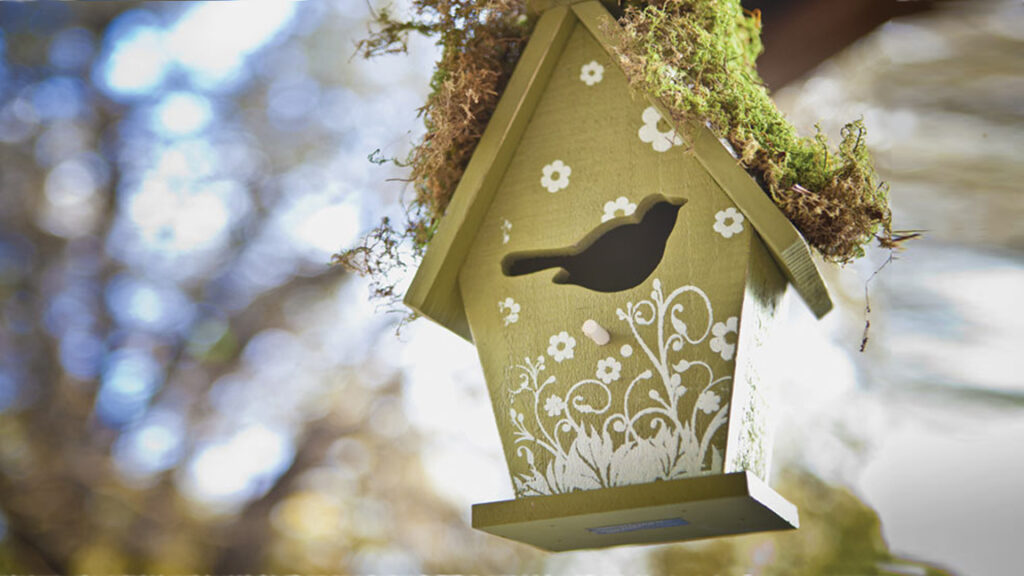
By Will Summers, Washington County Master Gardener
We are in mid-winter and outdoor activities are limited for many southern Illinois gardeners. However, constraints breed opportunities elsewhere. Now is the time to make plans for your new year’s outdoor gardens. This article seeks to provide ideas where you might want to change, add, or even reduce your home gardening and landscape. Hopefully, you are already accomplishing most of these listed items, but we hope you will find new ideas to incorporate in your gardening. This concept provides healthy diverse, native, multi-storied habitats with abundant food sources for a wide variety of migrating and non-migrating birds species.
Plant a tree. This year, plant at least one new, native hardwood tree species. Avoid ash, maple or elm, which provide fewer benefits to birds. Birds prefer native oaks, cherry, locust, tulip poplar and hackberry that provide nuts, berries, fruit and lots of insects. One study shows more than 300 different native caterpillar species inhabiting one white oak. Other native trees studied show more than a thousand different insect species, that provide food for birds, utilizing these trees.
Shrubs are good. Birds breed in dense shrubs. Almost any native berry producing bush benefits birds. Avoid allowing bush honeysuckle to grow whenever found. Some of the native shrub favorites for birds are service berry, choke berry, native dogwoods, American plum, viburnum, smooth sumac, spicebush and elderberry. Even pokeweed, a vigorous perennial berry producer, is favored by many birds.
House your bird. Bird houses are fine, but be sure to refer to the correct sizes, including sizes of openings and construction materials. Foremost, pay attention to height above ground and habitat locations. Locate all bird houses away from active bird feeding stations to reduce conflicts.
Leave the leaves. The leaves left on your lawn or that have blown in since you raked should be allowed to stay. These leaves provide valuable cover for remaining insects, seeds and food for wintering birds. Then, mulch them into your lawn for improved fertility and plant nutrition with your first mowing. A thin layer of leaves does not harm lawns in winter but provides a greater environmental benefit if allowed to remain.
Stow the mow. Consider allowing a portion of your lawns to remain unmown for the summer. This is a new concept started recently by the University of Illinois called “No-Mow Zone.” This provides a healthy habitat for all species of wildlife, which in turn benefits birds.
Snag a snag. If you have a dead tree or stump that does not jeopardize your property, leaving it will provide a wealth of food, cover and habitat for birds. Remnant snags add a certain mystical charm to landscapes, while providing an abundant source of insects and nesting cover. You will be rewarded when you hear the first woodpecker pecking on its limbs, and if you’re lucky they may even create a nest for rearing their young. A dead oak may be left standing for eight to ten years without risk of falling, but beware that ash, pine and poplar trees will only stand for a couple of years.
House your house cat. Cats account for billions of birds’ lives each year. Provide a better home for your cat by keeping it in your home. Besides destruction to birds, studies show that housed cats live longer, better lives with fewer veterinary bills to boot.
As we begin our new year in gardening and managing our home landscapes, please consider turning over a new leaf: “Messy is okay,” says Dr. Michael Ward, University of Illinois Ornithologist. According to the Cornell Lab of Ornithology, North America has lost three billion birds since 1970, a 30% decrease in all bird populations. Consider ways to diversify and ponder the overall contribution your home lot makes in urban wild bird habits. It is that bird populations are adjusting to human habitat changes over the years. We are blessed with more than 27 million acres of Illinois mostly devoted to corn and soybeans, which is about 75% of the total land area. If homeowners made a conscious effort in applying simple conservation efforts to their backyards, the overall benefit would be to produce a better habitat overall.
For more backyard conservation ideas, please contact your local Master Gardener or your county University of Illinois Extension office. Please have a happy and healthy new year planning diverse uses for your property.




